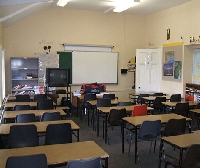
Implementing accommodations for special needs children boosts learning for all
School is a time of discovery and excitement. But for children with special needs, it can also be a time of frustration and discouragement.
Fortunately, simple modifications to the manner in which material is presented, as well as other simple classroom accommodations, can often assist special needs children and encourage their information processing.
Social Skills
Many disorders, such as autistic spectrum disorders, can result in diminished social skills which affect the ability of children to interpret social cues. But by integrating learning material into the classroom which presents common social behavior scenarios, and by identifying appropriate responses to these cues, it is possible to bolster a child’s ability to recognize social cues. Focusing on appropriate and inappropriate behavior in relation to various scenarios allows children the opportunity to discuss and understand what behavior is expected of them before they encounter a situation and equips them to deal with the similar, future encounters.
Another way to stimulate the recognition of social cues is through a convenient and easy to use social skills App. The App allows instructors to select cards depicting the social cues they need to work on, and to encourage students to work on their solving problems and social skills. By integrating a program of structured recognition, student with special needs can learn to identify social cues and appropriate responses.
~
Photo Cards ? Emotions
Students with problems identifying social cues often do not recognize emotions or facial expressions. Our society relies heavily on facial expressions to convey intent, and the inability to recognize these cues can hinder students who cannot interpret them effectively. But by helping students properly identify emotions through the use of photo cards, these students can begin to distinguish the expressions, their meaning, and how to properly react to the expression as a social cue.
Visual Cues
Some students, especially those who rely heavily on visual cues, such as those with autism or auditory processing difficulties, benefit from visual cues.
The information they receive may be disorganized or may be ineffectively organized in a manner that does not make sense to them. By providing visual maps that encourage conceptual mapping of concepts, visual learners can organize the material in a way that is more meaningful to them. When information is meaningful, it is more likely to be retained.
Sensory Issues
Many conditions can cause students to suffer from sensory processing disorders – often commonly expressed as a kind of “sensory overload” – which can make learning difficult. By identifying a child’s sensory issues, teachers can help students maintain a more even-keel and stay focused and “on task.” A child who suffers from sensory processing or modulation problems can learn ways to cope with the various stressors they encounter throughout their day.
Determining a student’s individual stressors with regarding to sensory issues is the first step in identifying their sensory arousal levels and how to best formulate an appropriate response.
Utilizing Altered Auditory Input Technique
Students who have difficulty learning rudimentary language concepts or who have problems processing the information, such as those with Attention Deficit Disorder (ADD), Autism, and auditory processing disorders, can benefit from a technique known as Altered Auditory Input (AAI) technique. By implementing this technique, teachers can make directions easier for each child to process.
There are innumerable resources available to teachers, parents, and those who care for special needs children. By taking advantage of these resources, these special needs can better be met in both the classroom and the home, providing the special needs student with the skills they need to grow and thrive.
Resources:
American Speech-Language-Hearing Association: Auditory Processing Disorders,
